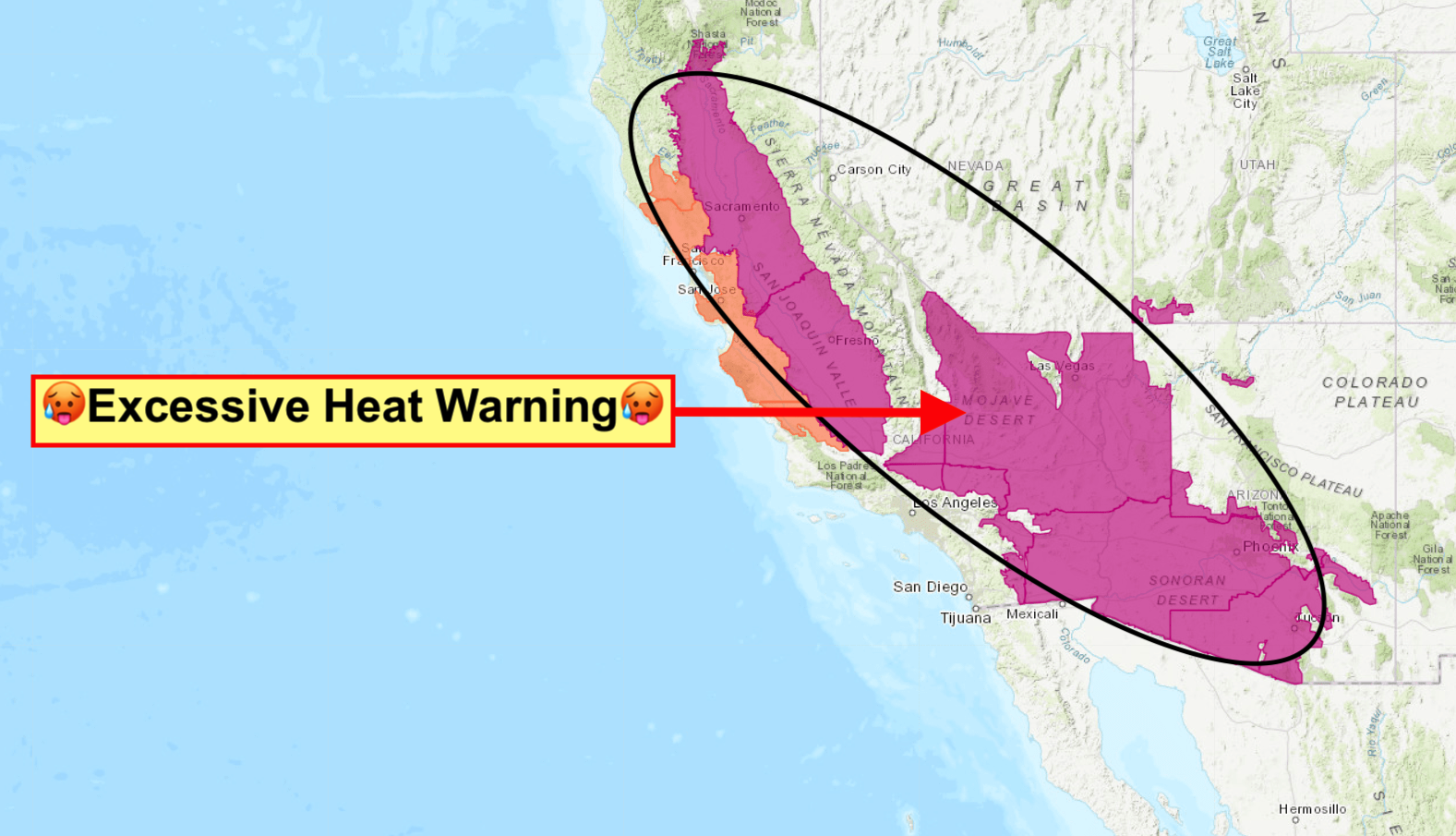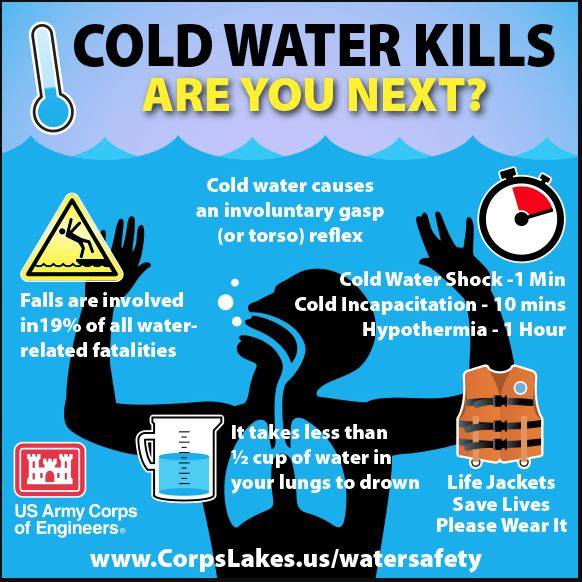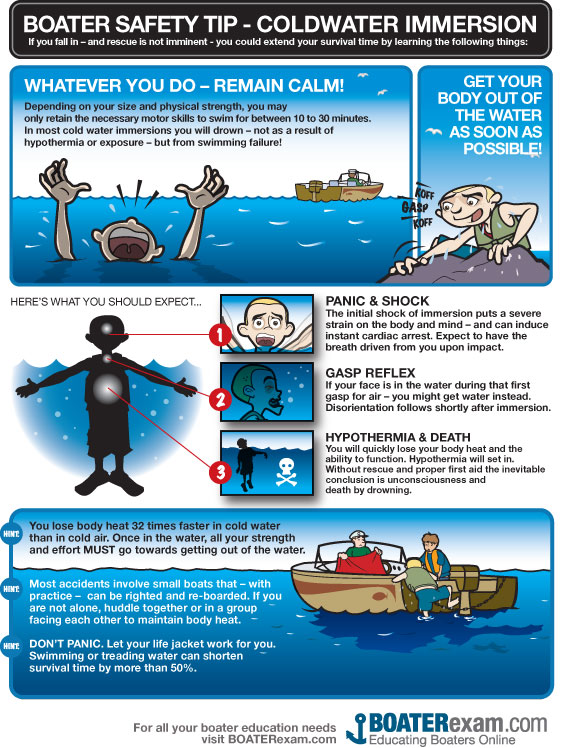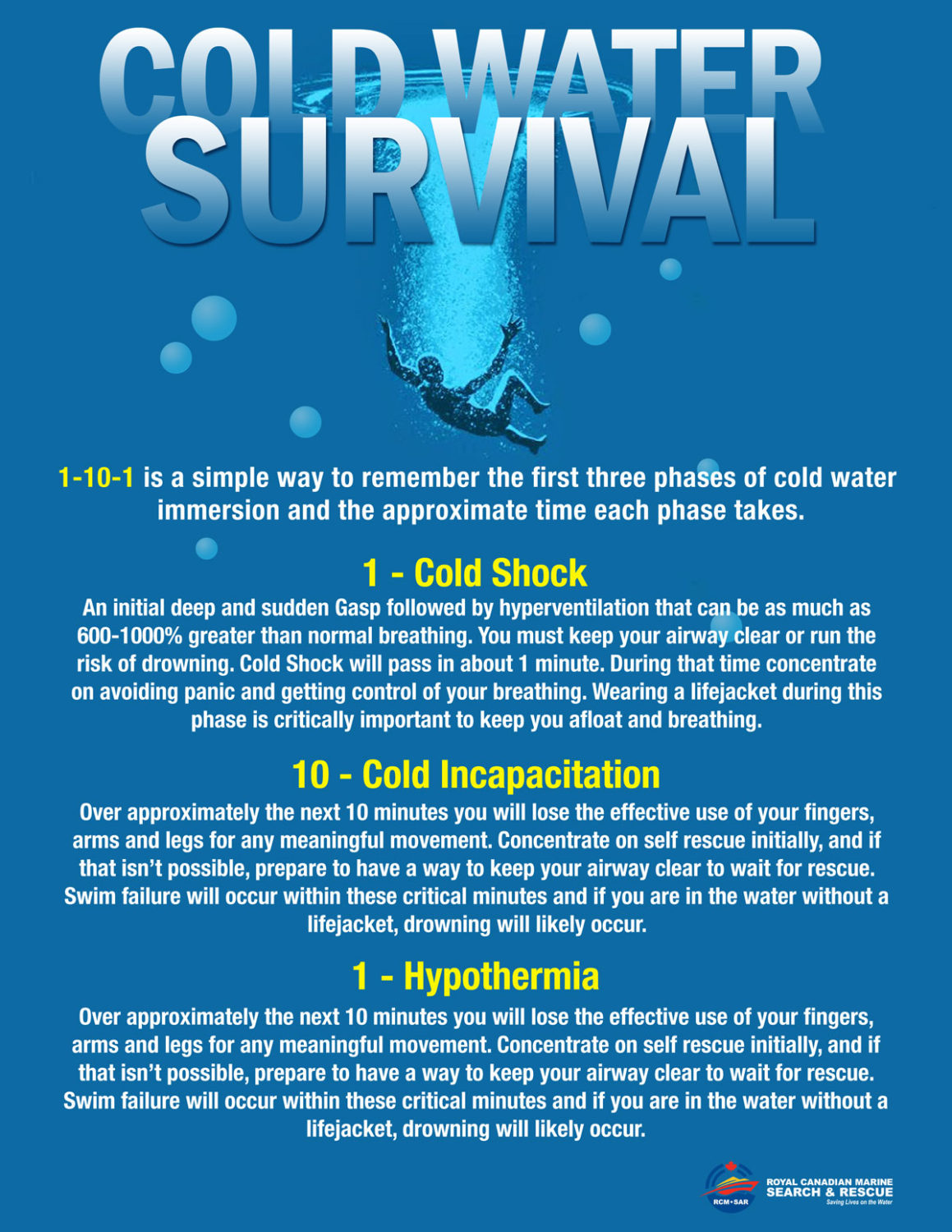
The excessive heat warning in parts of California, Nevada, and Arizona has lead to officials issuing a warning about hypothermia.
Yep, you read that right! The mercury is creeping beyond 100ºF causing the rapid melt of the mountain snowpack. All that ice-cold water then flows into Central California rivers and streams.
...Hot Weather through Thursday... .The first major heat wave of the season for interior NorCal will continue this week. Daytime highs will be in the triple digits for most Valley locations through Thursday. Overnight temperatures will remain warm offering little relief. Moderate to high heat risk is expected, which means there will be increasing chances for heat related illnesses. Be sure to practice heat safety. * WHAT...Dangerous heat with afternoon highs between 97 and 107 for the Valley, 95 to 105 for the Delta, and 95 to 100 for the Foothills. * WHERE...Northern Sacramento Valley, Central Sacramento Valley, Southern Sacramento Valley, Carquinez Strait and Delta, Northern San Joaquin Valley, Mountains Southwestern Shasta County to Western Colusa County, Northeast Foothills/Sacramento Valley and Motherlode. * WHEN...Until 7 PM PDT Thursday. * IMPACTS...Heat related illnesses such as heat exhaustion and heat stroke can occur due to prolonged exposure to hot temperatures, including the general population. People most vulnerable include those who are spending lots of time outdoors, those without air conditioning, young children, the elderly and those with chronic ailments. * ADDITIONAL DETAILS...Local rivers and streams are running fast and cold. Cold water safety should be practiced when on and near the water.
While taking a dip in the fresh waters at your local swimming holes might seem like the perfect way to cool off, officials are warning residents to avoid the icy water.
“Rivers and streams are dangerous places to seek cooling relief from the heat. Brief exposure to the cold water of a river or stream may lead to hypothermia.”
National Weather Service statement

Why Cold Water is Dangerous
Sudden Drowning
With very few exceptions, immersion in cold water is immediately life-threatening for anyone not wearing thermal protection like a wetsuit or drysuit.
When cold water makes contact with your skin, cold shock causes an immediate loss of breathing control. The result is a very high risk of suddenly drowning – even if the water is calm and you know how to swim. The danger is even greater if the water is rough. Inability to coordinate your breathing with wave splash greatly increases the danger of inhaling water.
Gradual Drowning
Coldwater drowning can happen immediately, but it can also take a fairly long time – a gruesome, drawn-out process in which small amounts of water are inhaled, over and over again, until your lungs become so waterlogged that you suffocate. Inhaling about five ounces (150 ml) of water is enough to cause drowning.

Heart Failure and Stroke
Because skin blood vessels constrict in response to sudden cooling, cold water immersion also causes an instantaneous and massive increase in heart rate and blood pressure. In vulnerable individuals, this greatly increases the danger of heart failure and stroke.
All of these things happen long before hypothermia becomes an issue.
Stages of Immersion
To understand why some cold water deaths happen instantly, while others take hours, you need to be familiar with the four stages of cold water immersion, what happens during each of them, and why it happens.
- Stage 1:Cold Shock
- Stage 2:Physical Incapacitation
- Stage 3:Hypothermia
- Stage 4:Circumrescue Collapse

Cold shock is over in a relatively short period of time, generally within five minutes, however, breathing problems may persist for a longer time while you’re in the water.
If you survive the cold shock phase, the threat shifts to physical incapacitation. It’s quite possible to lose the ability to use your hands in 60 seconds, and use of your arms in minutes.
It takes at least 30 minutes for an average adult to become hypothermic, even in freezing water. A very large person with a lot of body fat can delay both physical incapacitation and hypothermia, sometimes for hours. Size does matter.
The final stage, circumrescue collapse, derives its name from the fact that the collapse can occur before, during, or after rescue.